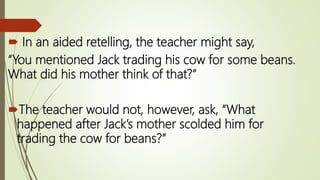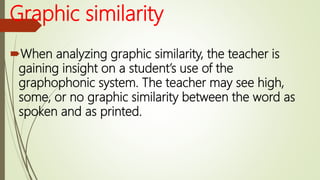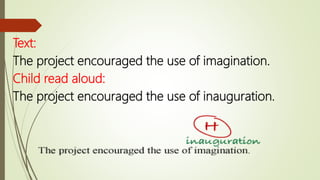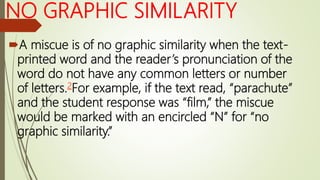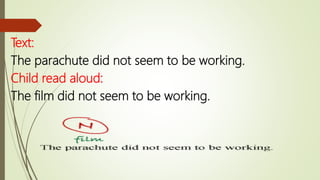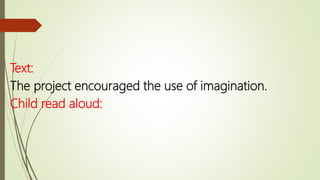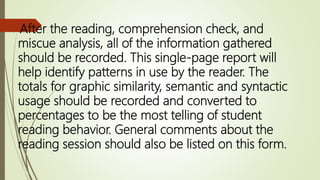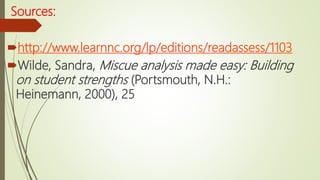Miscue analysis is a reading assessment technique that examines the errors, or "miscues", that students make when reading aloud. It focuses on understanding the reading strategies and thought processes behind a student's miscues rather than just counting errors. The teacher records each miscue made and analyzes it for graphic similarity to the written word as well as syntactic and semantic correctness. This provides insights into how the student integrates language cues to construct meaning from text. A comprehension check through retelling further informs the teacher about the student's understanding of the passage. Analyzing patterns in a student's miscues can help identify their strengths and needs in reading.


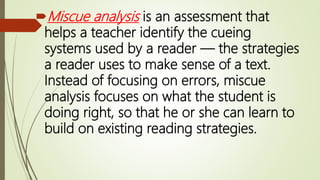


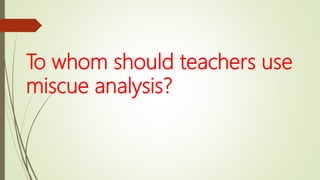






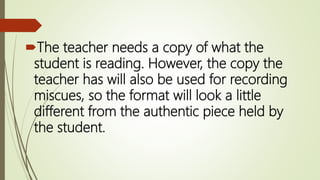















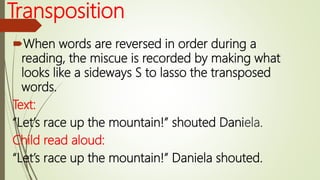





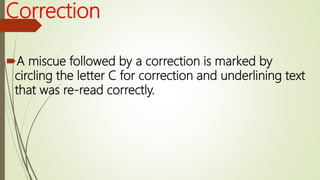


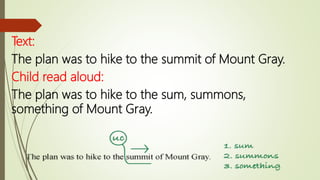

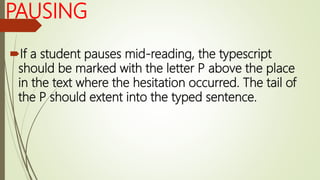
![Text:
Next, we would inflate our rafts.
Child read aloud:
Next, we would [pause for about 10 seconds before
continuing to read] inflate our rafts.](https://image.slidesharecdn.com/miscue-analysis-by-emmanfinal-170212143952/85/Miscue-analysis-by-emman-f-inal-41-320.jpg)







